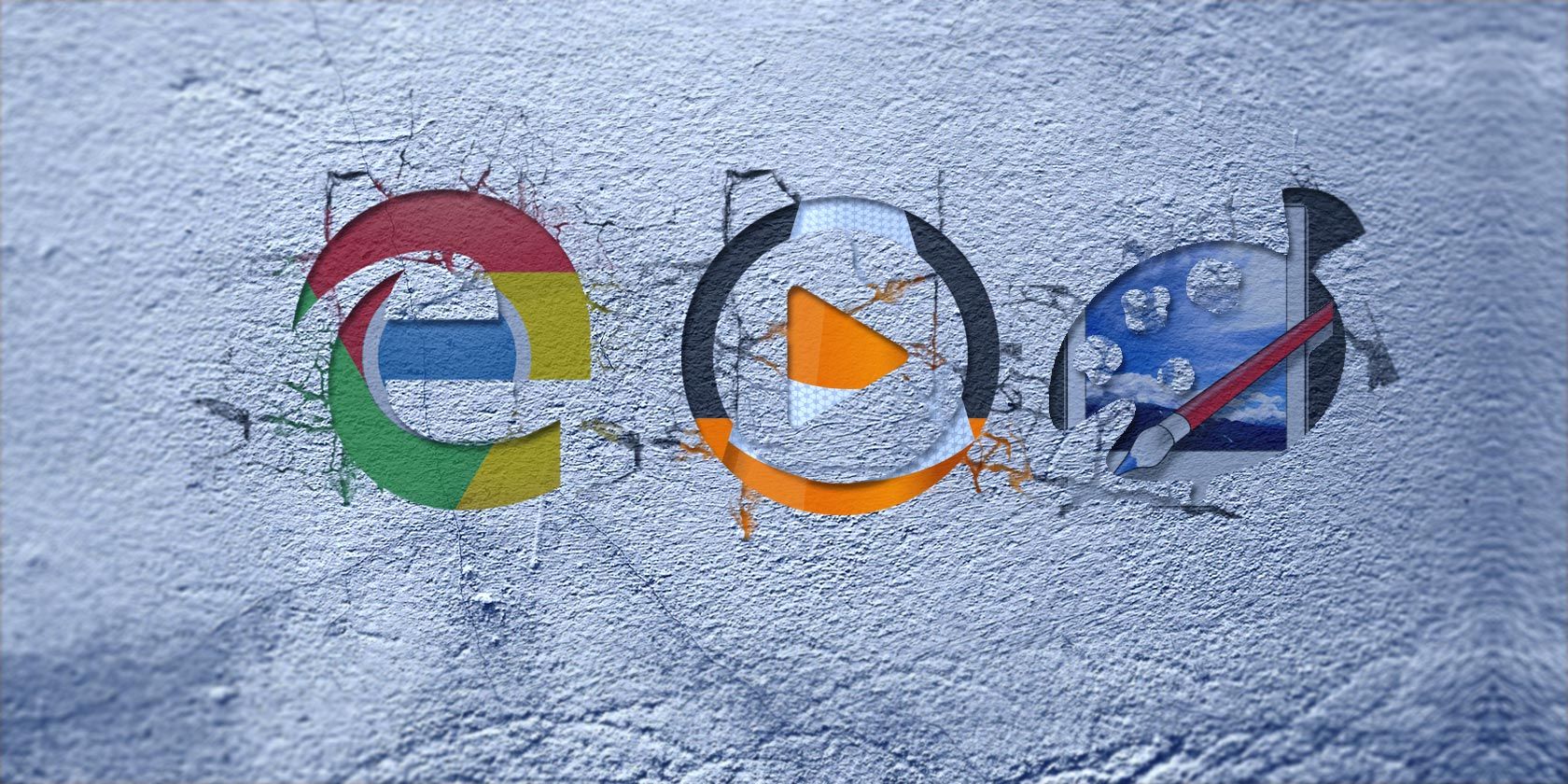Windows comes with a lot of software pre-installed. While many of its features aren't appreciated enough, some Windows apps that are simply inferior to other tools.
Let's look at the best software to replace Windows' default offerings. While many third-party tools offer only slight improvements over a Windows app, these five blow away the stock offerings in every way and are must-haves.
1. Google Chrome > Microsoft Edge
Edge is Microsoft's attempt to get people to use the default Windows browser after years of Internet Explorer (IE) being looked down upon by users everywhere. While it's far less of a pain than IE, it's still not worth using as your default browser.
Edge finally offers extensions, but not nearly as many as other browsers. You won't find basic conveniences like tab syncing or power user features in Edge, so it ends up feeling incomplete.
Our top pick for an Edge replacement is still Google Chrome. It has a massive library of extensions that add so much functionality to your browser, and plenty of tweaks for power users to fiddle around with.
Its sync capabilities let you open your desktop tabs on your phone and vice versa. The Chrome experience tops off with speed, security, and new features arriving regularly. Some people do have issues with Chrome, but for most we wholeheartedly recommend it over Edge.
Download -- Google Chrome
2. VLC Media Player > Windows Media Player
Windows Media Player has been around for years. It's still present in Windows 10, but hasn't changed much since its Windows 7 iteration.
With the rise of streaming media and lack of optical drives in newer machines, you probably don't open Windows Media Player often. However, a good media player is still important to keep around.
VLC Media Player is an easy choice for the best. This tool can play everything that you throw at it, so your video and audio files have a central home. It also natively plays DVDs, and supports advanced functions like ripping audio from video. And you can set up a home media server using VLC.
Even if you only use it sparingly, there's no reason to settle for Windows Media Player.
Download -- VLC Media Player
3. Paint.NET > Microsoft Paint
Paint is the basic image editor included with Windows. MS Paint has improved since its inception, but at this point, it's still a barebones solution that's frustrating to use for anything outside of simple cropping jobs.
Everyone needs to work with image editing at some point. Whether it's rotating, blurring sensitive info, or editing large parts of the image, you need something better than Paint.
Paint.NET is your best choice. It offers far more features than MS Paint without an overwhelming interface. You'll find layers, automatic adjustment, blending, blurring, and more all inside an easy-to-use package. It won't replace Photoshop for hardcore editing enthusiasts, but most users can do all the editing they need in Paint.NET.
Download -- Paint.NET
4. Notepad++ > Notepad
Windows Notepad gets overshadowed by Word, but it's still a useful utility. There are plenty of useful applications for a quick text file, like jotting down a brief note or having a place to strip the formatting on text. Notepad even has some tricks up its sleeve.
There's no reason use it, though, when Notepad++ exists. This free tool is so feature-packed that Notepad is probably embarrassed. Notepad++ includes tabs so you can keep multiple files open at once and even stores unsaved files until you explicitly close them. If you're using it to write code, you can select a language for formatting and auto-correct help. Macro support lets you automate repetitive tasks and save time.
If you need more functionality, Notepad++ has a library of plugins that give you more options, like a spellchecker and HEX converter. You won't find weird Notepad annoyances like the Ctrl + Backspace shortcut entering a weird empty character, either. Even if you never write code and just use Notepad++ to scratch down notes, it still deserves a place on your PC.
Download -- Notepad++
5. ShareX > Snipping Tool
The Snipping Tool included in Windows is way faster than pressing PrintScreen and pasting the image into Paint. But it's still pretty basic. You can't make quick edits to a screenshot or upload it to any services.
For that, you need a better screenshot tool, and we like ShareX for most people. ShareX includes an impressive amount of features, such as live editing for getting the perfect shot, tons of places to upload your images to, and automatic steps to take once you've completed a screenshot.
It uses the powerful Greenshot editor but builds greatly on it. It even includes some features that Snagit charges for, like scrolling your screen to capture a large area.
Screenshots are useful for all sorts of moments, so it helps to have a great editor for working with them. The Snipping Tool simply can't compete with everything ShareX has to offer.
Download -- ShareX
Which Windows Apps Have You Replaced?
There are several other default Windows utilities that could have made this list. We almost included Windows Defender as its antivirus protection isn't as solid as other choices, but it makes up for that by avoiding the nag screens, useless browser extensions, and phoning home that other antivirus software has. Some Windows software is fantastic, but for these tools you just can't beat the free alternatives.
Complement these programs with more must-have apps and have a look at popular programs you should uninstall to make your software experience even better.
Which built-in Windows software do you swap for another tool? Add your favorites to the list below in the comments!

